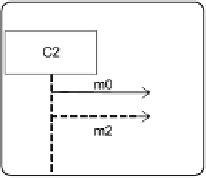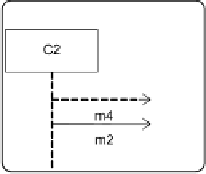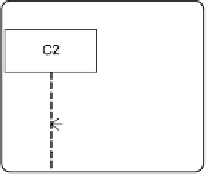Information Technology Reference
In-Depth Information
Fig. 6.
Illustration of the notions of parts
In our approach, the definition of join point will rely on a notion of
part of a
bSD
. A join point will be defined as a part of the base bSD such that this part
corresponds to the pointcut. To define the notion of correspondence between a
part and a pointcut, in Sect. 3.2, we introduce the notion of isomorphism between
bSD. To define in a rigorous way the notion of join point, we also have to formally
define the notion of part of a bSD. In Sect. 3.1, we propose four definitions for
parts of a bSD
, some of which allow the multiple weaving of aspects.
3.1
Notion of Part of a bSD
We propose four definitions of parts of a bSD which allow the definition of four
different types of join points. These definitions of parts will be called:
strict
part, general part, safe part
and
enclosed part
. Before introducing formally the
definitions of parts, we use Fig. 6 to give a first intuitive idea of these parts.
Let us imagine we want to detect a message
m
1 followed by a message
m
2
from
C
2to
C
3 in the bSDs in Fig. 6. Firstly, it is clear that the messages
m
1
and
1, but it is not obvious that these two
messages form a join point in the other bSDs because there is either a message
which “surrounds”
m
2 form a join point in the bSD
M
m
1and
m
2(in
M
2), or a message between
m
1and
m
2(in
M
3and
M
4).




































Search WWH ::

Custom Search